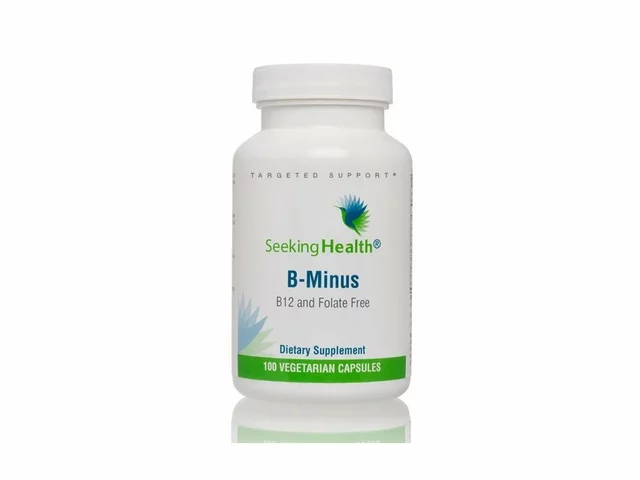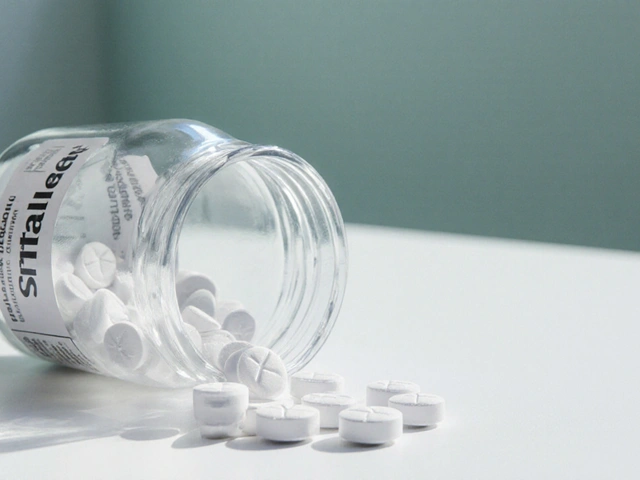Adherence Tracking: Digital Tools for Managing Generics
- Colin Hurd
- 21 November 2025
- 12 Comments
Managing generic medications isn’t just about picking up a prescription-it’s about taking it, every time, exactly as prescribed. But for millions of people on long-term treatments for high blood pressure, diabetes, or cholesterol, that’s easier said than done. Studies show nearly half of patients stop taking their generic meds within a year. And the cost? Over $300 billion a year in the U.S. alone from avoidable hospital visits, complications, and wasted prescriptions. The problem isn’t laziness or forgetfulness alone-it’s that generic medications have historically been left out of the support systems that brand-name drugs enjoy. No free apps. No dedicated nurses. No reminders built into the packaging. That’s where digital adherence tracking steps in.
What Digital Adherence Tracking Actually Does
Digital adherence tracking isn’t just another app that pings you to take your pill. It’s a system that records, verifies, and reports whether a medication was actually taken. Think of it like a digital logbook that doesn’t rely on memory. Some tools use smart pill bottles that click open only when the right dose is removed. Others use blister packs that send a signal when a tablet is pushed through. There are even ingestible sensors-tiny chips swallowed with the pill-that transmit a signal to a patch on the skin. These aren’t sci-fi fantasies. They’re FDA-approved, clinically tested, and already in use.For generics, this matters because they’re the backbone of chronic disease care. In the U.S., 90% of all prescriptions are for generic drugs. They’re cheaper, widely available, and just as effective. But without manufacturer-backed support programs, patients are left to fend for themselves. Digital tools fill that gap by turning passive pill-taking into active, measurable behavior.
How the Main Tools Compare
Not all adherence tools are built the same. Here’s how the top systems stack up in real-world use:| Tool | Technology | Accuracy | Cost | Best For |
|---|---|---|---|---|
| MEMS AS® | Digital pill bottles with cloud analytics | 100% (clinical trials) | $150-$300/month (pharmacy/enterprise) | Pharmaceutical trials, high-risk patients |
| Tenovi Pillbox | Cellular-connected smart dispenser with LED alerts | 90-95% | $149 device + $29.99/month | Complex regimens, elderly patients |
| Wisepill | Electronic blister packs with SMS/email alerts | 85-90% | Custom pricing (pharmacy integration) | Chronic conditions, remote monitoring |
| VDOT (Video DOT) | Patients record themselves taking meds via smartphone | 92-95% | Free to low-cost (insurance-covered) | TB, mental health, supervised care |
| McKesson APS | Pharmacy claims data analysis | 80-85% (estimated) | $99-$299/month (pharmacy subscription) | Pharmacies tracking refill patterns |
MEMS AS is the gold standard in clinical research-used by big pharma to track trial participants. But it’s overkill for everyday use. It doesn’t talk to patients. It doesn’t send friendly reminders. It just logs data. Tenovi, on the other hand, gives you a physical box with color-coded lights: red for missed, green for done. It’s simple. It works even if you don’t have a smartphone. But it costs money-and that’s a barrier for many.
Why Some Tools Fail in Real Life
It’s easy to assume that if a tool works in a study, it’ll work at home. But real life is messy. A study with 22 patients showed that 64% stuck with a digital pillbox after 30 days. After 60 days? Only 45%. Why? Because the device was bulky. Charging it every few days felt like another chore. One user on Amazon said, “The cellular gateway dies every three days with four medications tracked.” That’s not a feature-it’s a flaw.Video-based monitoring, like VDOT, has impressive accuracy. But asking someone to film themselves taking medicine every morning? That’s awkward. It feels invasive. One patient on PatientsLikeMe said, “I felt like I was under surveillance.” And when you’re already stressed about managing a chronic illness, that kind of pressure backfires.
Then there’s the pharmacy side. McKesson’s dashboard lets pharmacies see who’s refilling on time. But it doesn’t know if the patient actually took the pill. It just knows they picked it up. That’s a 15-20% error rate right there, according to AHRQ. You can’t manage adherence if you’re only guessing.
Who Benefits Most?
Not everyone needs a high-tech solution. But some people absolutely do.Patients on five or more medications-common in older adults with diabetes, heart disease, and arthritis-are at highest risk. So are people with memory issues, depression, or limited support systems. For them, a simple reminder app won’t cut it. They need something that physically controls access to the meds and reports back.
Pharmacists are the unsung heroes here. A 3- to 5-minute chat during pickup can make all the difference. Ask: “Do you ever forget your pills?” “Do you have trouble opening the bottle?” “Would a light or sound help?” Those questions identify who needs tech-and who doesn’t. One pharmacist in Perth reported that after adding adherence checks to routine refills, their patients on hypertension generics improved from 62% to 78% adherence in 18 months. But they had to hire a tech to manage the data. That’s the catch: tools only work if someone’s watching.
The Hidden Barriers
Cost is the biggest blocker. Tenovi’s $149 device plus $30/month isn’t covered by most insurance. Medicare Advantage plans only cover remote therapeutic monitoring for 38% of members. For low-income patients, that’s out of reach. Even if the device works, it’s useless if it sits in a drawer.Data privacy is another concern. A 2022 AHRQ survey found that 63% of patients worry their adherence data could be used against them-by insurers, employers, or even family members. No one wants to be flagged as “non-compliant.” Transparency matters. Tools must clearly explain what data is collected, who sees it, and how it’s used.
And then there’s the learning curve. A basic reminder app takes 15 minutes to set up. A full system like Tenovi? Up to 90 minutes. That’s a lot to ask of someone who’s already overwhelmed. Training isn’t optional-it’s essential. Pharmacies that invest in staff training see three times the adoption rates of those that don’t.
What’s Next?
The future isn’t about more gadgets. It’s about smarter integration. Companies like AARDEX and Tenovi are now connecting directly to electronic health records (EHRs) like Epic and Cerner. That means when a patient misses a dose, their doctor gets an alert-not a pharmacy report, not a dashboard, but a real-time clinical flag.AI is starting to predict who’s at risk before they miss a dose. CVS Health’s pilot program used machine learning to spot patterns-like refilling early or skipping doses on weekends-and flagged high-risk patients with 22% more accuracy than traditional methods. That’s huge. It shifts the model from reactive to proactive.
Regulators are catching up too. CMS now ties Medicare Star Ratings to adherence for generics like statins and blood pressure meds. A 1-point increase in adherence scores can mean $1.2 million more in revenue per 100,000 members. That’s driving hospitals and pharmacies to invest-not because it’s nice, but because it’s profitable.
By 2025, experts predict only 3 to 5 major platforms will dominate. They’ll be bundled into pharmacy benefit managers, not sold as standalone gadgets. The goal? Make adherence invisible-so it just works.
What You Can Do Today
If you’re managing generics for yourself or someone else:- Ask your pharmacist: “Do you have any tools to help track if I’m taking my meds?”
- If you’re on multiple pills, consider a simple pill organizer with alarms-even a basic one from the drugstore.
- Don’t assume a reminder app is enough. If you’re missing doses, you need something that confirms action, not just prompts it.
- Check if your insurance covers remote therapeutic monitoring. Some Medicare Advantage plans do.
- Be honest about what you can handle. A fancy box that needs daily charging won’t help if you can’t keep up.
Adherence isn’t about discipline. It’s about design. The right tool removes friction, not adds it. The best digital solutions don’t make you work harder-they make taking your meds easier than skipping them.
Are digital adherence tools covered by insurance?
Only in limited cases. Medicare Advantage plans cover remote therapeutic monitoring for about 38% of members as of late 2022, mostly for chronic conditions like COPD or hypertension. Most private insurers don’t cover devices like Tenovi or Wisepill yet. Some pharmacy benefit managers are starting to include them in value-based contracts, but you’ll need to ask your plan directly.
Can I use a smartphone app instead of a smart device?
Apps can help with reminders, but they can’t prove you took the pill. If you forget to tap “taken,” the app thinks you missed it. That’s why clinical studies show apps alone improve adherence by only 10-15%, while physical tracking tools (like smart bottles or blister packs) see 25-40% improvements. For serious chronic conditions, apps aren’t enough.
Do these tools work for elderly patients?
Yes-but only if they’re simple. Devices with visual cues (like Tenovi’s red/green lights) or voice alerts work better than apps with small buttons. Many seniors prefer physical devices they can touch and see. Avoid anything that requires typing, complex menus, or Wi-Fi setup. Cellular-connected devices that auto-sync are ideal.
How do I know if a digital tool is reliable?
Look for FDA-cleared or CE-marked devices, peer-reviewed studies, and integration with major EHR systems like Epic or Cerner. Avoid apps with no clinical validation. Check if the company publishes accuracy data-anything claiming “100% accuracy” without third-party validation is likely marketing hype.
Can my doctor see my adherence data?
Only if you give permission and the tool connects to your EHR. Most consumer devices keep data private unless you opt in. If your doctor wants to see your adherence stats, ask if they use a platform like McKesson APS or Tenovi’s EHR integration. Otherwise, you’ll need to share screenshots or printed reports manually.
What’s the cheapest way to start tracking adherence?
Start with a basic pill organizer with an alarm-many cost under $20. Pair it with a free app like Medisafe or MyTherapy for reminders. Then, talk to your pharmacist. They may have access to a low-cost pharmacy-based system like McKesson APS that doesn’t require you to buy hardware. The goal isn’t to spend money-it’s to find a system that fits your life.




Comments
Manjistha Roy
Digital adherence tools are a step forward, but they’re not a cure-all. Many patients, especially in low-resource settings, don’t have consistent internet access or the physical dexterity to use smart pillboxes. We need solutions that work offline, with minimal tech literacy. A simple alarm on a basic phone, paired with a weekly call from a community health worker, might be more sustainable than a $300 device that requires daily charging.
November 23, 2025 AT 09:20
Jennifer Skolney
I’ve seen this firsthand with my mom-she’s on six meds and uses Tenovi. The red/green lights saved her life. But you’re right, Manjistha-cost is brutal. Her Medicare Advantage plan didn’t cover it, so we paid out of pocket. Worth it? Yes. Accessible? No. We need these tools to be standard, not luxury items. Maybe if insurers saw the long-term savings on ER visits, they’d foot the bill.
November 24, 2025 AT 16:58
JD Mette
The data privacy concerns are real. I work in health IT, and even when patients opt in, the downstream use of adherence data is rarely transparent. Who’s accessing it? For what purpose? Is it shared with third-party analytics firms? Until there’s clear, enforceable consent protocols-not just buried in EULA text-many will distrust these systems, regardless of their accuracy.
November 26, 2025 AT 03:05
Olanrewaju Jeph
It is not enough to simply provide technology; we must also provide education and support. Many elderly patients do not understand why adherence matters, only that they are being watched. The most effective interventions I have encountered combine simple tools with consistent human interaction. A pharmacist who remembers your name and asks about your pills every time you come in-that is the gold standard. No algorithm can replace that.
November 26, 2025 AT 14:43
Dalton Adams
Let’s be honest-most of these tools are overengineered junk. MEMS AS is the only one with real clinical validity, and even that’s only useful in trials. The rest? Marketing fluff wrapped in plastic. Tenovi? A glorified alarm clock with a cellular modem. VDOT? A surveillance tool disguised as care. And don’t get me started on ‘AI predicting non-adherence’-that’s just data mining dressed up as innovation. The real solution? Make generics cheaper than candy so people don’t skip doses out of cost. Tech is a Band-Aid on a hemorrhage.
November 27, 2025 AT 23:30
Kane Ren
There’s hope here. I used to think adherence was just about willpower-until I saw my cousin, who has bipolar disorder, start using VDOT with her care team. She said it made her feel supported, not judged. That’s the magic: when tech feels like a teammate, not a taskmaster. We’re not just tracking pills-we’re rebuilding trust. And that’s worth every dollar.
November 28, 2025 AT 15:38
Charmaine Barcelon
Stop pretending these gadgets are helping. Most people just ignore them. My neighbor bought a smart pillbox-never opened the box. It’s in a drawer. People don’t want more chores. They want simpler pills, lower prices, and less guilt. This whole ‘digital adherence’ trend is just another way for corporations to profit off sick people’s anxiety.
November 30, 2025 AT 06:01
Karla Morales
📊 The ROI on adherence tech is undeniable. A 2023 JAMA study showed that for every $1 spent on smart blister packs, $7.80 was saved in avoided hospitalizations. But here’s the catch: only 12% of pharmacies even offer these tools. Why? Because reimbursement is a nightmare. CMS doesn’t reimburse for device procurement, only for ‘remote therapeutic monitoring’-and even that’s limited to 90 days. So we’re stuck in a loop: innovation dies because payment models haven’t caught up. The problem isn’t the tech-it’s the bureaucracy.
November 30, 2025 AT 07:04
Javier Rain
My clinic just rolled out Wisepill for our diabetes patients. Within six weeks, adherence jumped from 58% to 79%. The best part? The patients didn’t even notice the tech-they just noticed their A1c dropped. We didn’t push it. We didn’t nag. We just made it part of the refill process. The key? Integrate it into existing workflows, not add another layer. And yes, we trained the staff. That’s non-negotiable.
December 2, 2025 AT 06:09
John Mackaill
John Mackaill here. I’m from the UK, and we’ve had similar struggles. The NHS tried rolling out smart bottles, but uptake was low because patients felt like they were being policed. Then they shifted focus: instead of ‘tracking compliance,’ they started calling it ‘supporting independence.’ Language matters. When you frame it as empowerment-not surveillance-people respond differently. Simple, but profound.
December 3, 2025 AT 15:09
Adrian Rios
Let me tell you about the real hero in all this: the pharmacist. Not the app. Not the device. The person who remembers your name, your dog’s name, and that you hate taking pills with coffee. I’ve seen pharmacists in rural Iowa spend 15 minutes with a patient every refill-not because they’re paid extra, but because they care. That’s the secret sauce. Tech can help, but it can’t replace human presence. If we’re going to fix adherence, we need to fund more pharmacy staff, not more gadgets. And yes, I’ve seen the data. The ones with the best outcomes? They have the most human contact. Period.
December 3, 2025 AT 22:28
Casper van Hoof
Adherence, as a phenomenon, is not merely a behavioral issue-it is an ontological one. The patient’s relationship with their body, their illness, and their autonomy is mediated through the ritual of ingestion. Digital tracking, in its current form, externalizes this internal negotiation into a quantifiable metric, thereby reducing the existential weight of chronic illness to a binary: taken or not taken. This epistemic shift, while pragmatically useful, risks alienating those who already feel fragmented by their condition. The solution, then, must not only be technological, but phenomenological: to restore the dignity of the act of taking medicine, not merely to record its occurrence.
December 5, 2025 AT 03:09